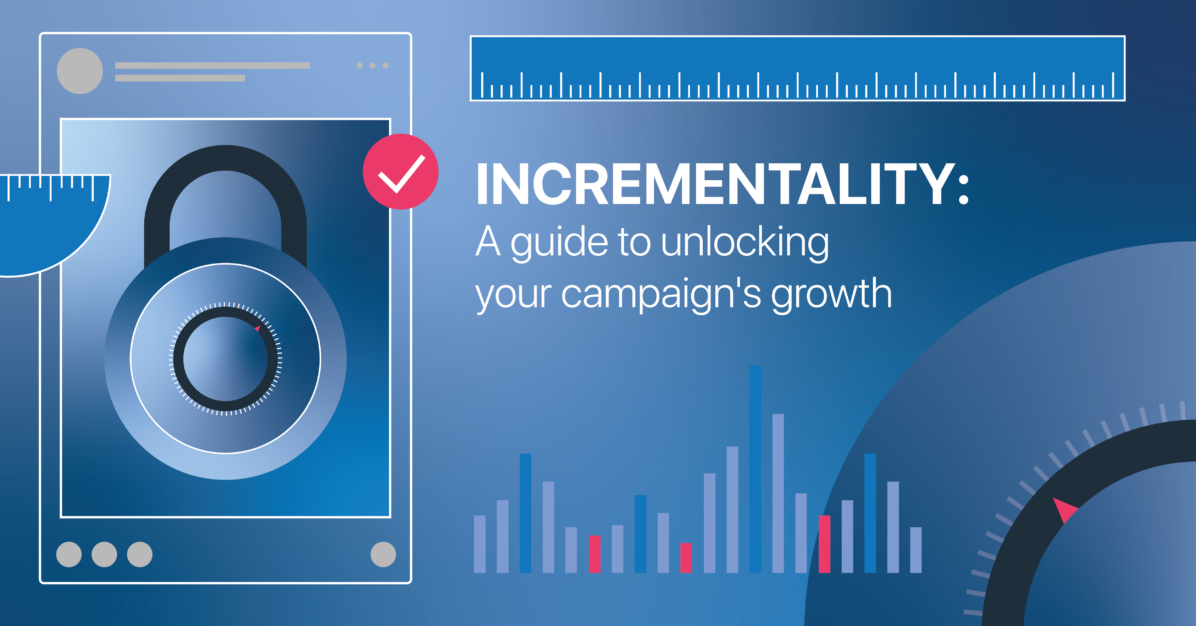Incrementality: A guide to unlocking your campaign’s growth

What is Incrementality? Incrementality helps advertisers understand the impact of their campaigns through their ads. As an advertiser, it is critical to identify what is and isn’t working. Using control tests, I
While platform specific and 3rd party data offer valuable insights, Incrementality testing takes the data one step further and deepens the value of the ad itself. Incrementality can help you answer how much impact your ads are having on your brand and determine whether a user converted because they were exposed to your advertisement.
The results can help you as an advertiser identify how much business value is driven by an isolated tactic, enabling you to make smarter decisions and optimize accordingly.
5 Ways to increase your campaign’s Incrementality
Creative
Often the first audience touchpoint is through creative. Producing compelling creative can entice those who normally wouldn’t click on your ad to take desired actions. As such, creative acts as one of the first levers to pull in order to help increase Incrementality.
You don’t need a full creative refresh, it can be as simple as testing different elements in your creative. For example, using a product shot vs. a lifestyle shot or a static image vs. video. Try leveraging creative best practices from each platform, and stay informed on what tactics are seeing success.
Audience
Your audience plays an important role in determining Incrementality.
For example, remarketing to customers who shopped on your website within the last 12 months vs. remarketing customers who shopped within the last 24 months can yield different I
Now that we understand what I
Incrementality can also have an impact on who you don’t target. For instance, if you are remarketing to existing customers, consider excluding those who have purchased in the last month. Perhaps they will be more likely to purchase again without needing to see your ads.
Device
As our social landscape moves towards greater mobile usage, it is important to note the difference in
A mobile user may browse their content in discovery mode, to learn about products or services. They may find themselves revisiting the website on their desktop device and completed the purchase there. This would suggest that desktop placement offers higher Incrementality.
Although, we do not recommend splitting your targeted audience based on device, but rather encourage advertisers to combine as many together as possible. It is still beneficial to understand which devices can yield more incremental conversions. This can influence other decisions along the pipeline. Such as, how to leverage optimal content based on the device that is more incremental.
Next, even though not every platform offers this option, understanding which device can generate higher Incrementality, you can utilize this information to guide bidding methodology. For instance, setting the option to bid more against mobile impressions vs. desktop impressions.
Placements
When it comes to placements, the narrative is similar to your device targeting.
We recommend combining as many placements together in order to maximize efficiencies. For example, Pinterest users who are searching for inspiration may be more receptive to your message and hence, have higher propensity to convert.
However, it is worthwhile to know where your most incremental users are. For instance, certain publishers who offer a search functionality will often find that this placement
Optimizations
This is a variable that can differ from advertiser to advertiser — depending on how your campaigns are managed.
Looking at ‘Conversion Attribution’ could help improve your Incrementality. Whenever possible, use the publisher’s algorithm to look for users who are likely to click on an ad rather than solely view the ad. This is a simple, yet powerful way to increase Conversion Lift.
How Incrementality is measured
Each publisher has a different method for calculating Incrementality. (For example Facebook Conversion Lift vs. Pinterest Online Conversion Lift)
Generally speaking, the most methodical approach is to apply a holdout to your campaign. The holdout acts as a control group of users who will not see your ads. The remaining balance of users in your campaign will be your test audience (those who will see your ad).
Once the duration of your test has been completed, you will take the results from your test group and compare that number to your control group. The difference will be your Conversion Lift. This will represent incremental impacts on conversions.
Takeaways
Incrementality testing can be a very powerful tool in
Understanding which ads drive sales (and which don’t) unlock insightful data to help you be a smarter digital marketer. You know now increasing Incrementality is simply expanding on the following data:
- Creative: Produce compelling creative
- Targeting: Leverage your audience insights
- Device: Utilize optimal content based on the device
- Placements: Run across multiple placements for maximum efficiency
- Optimizations: Consider using conversion attribution
Next Steps
If you would like to learn more about how your campaign and overall business goals can benefit from Incrementality testing we’d love to chat!